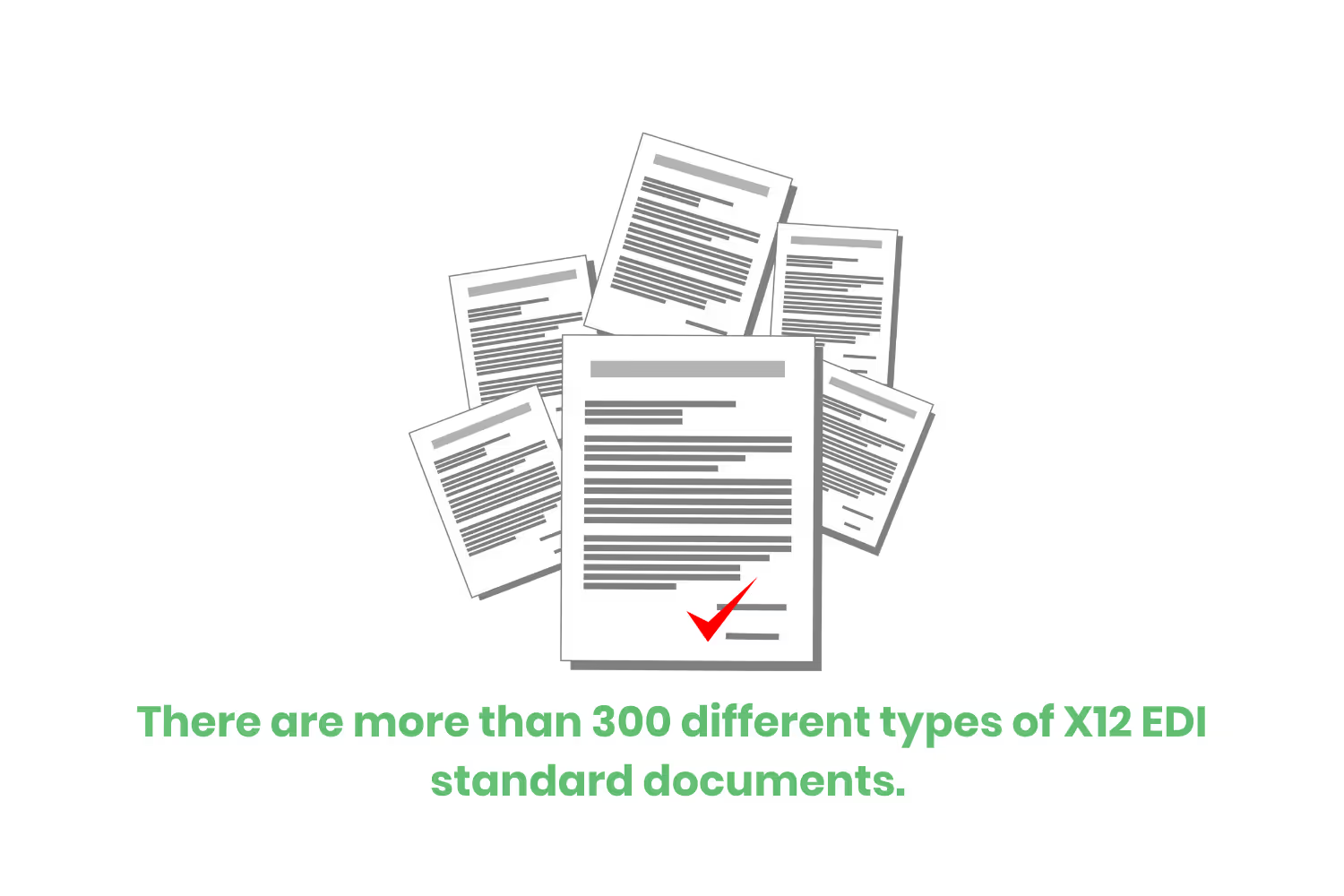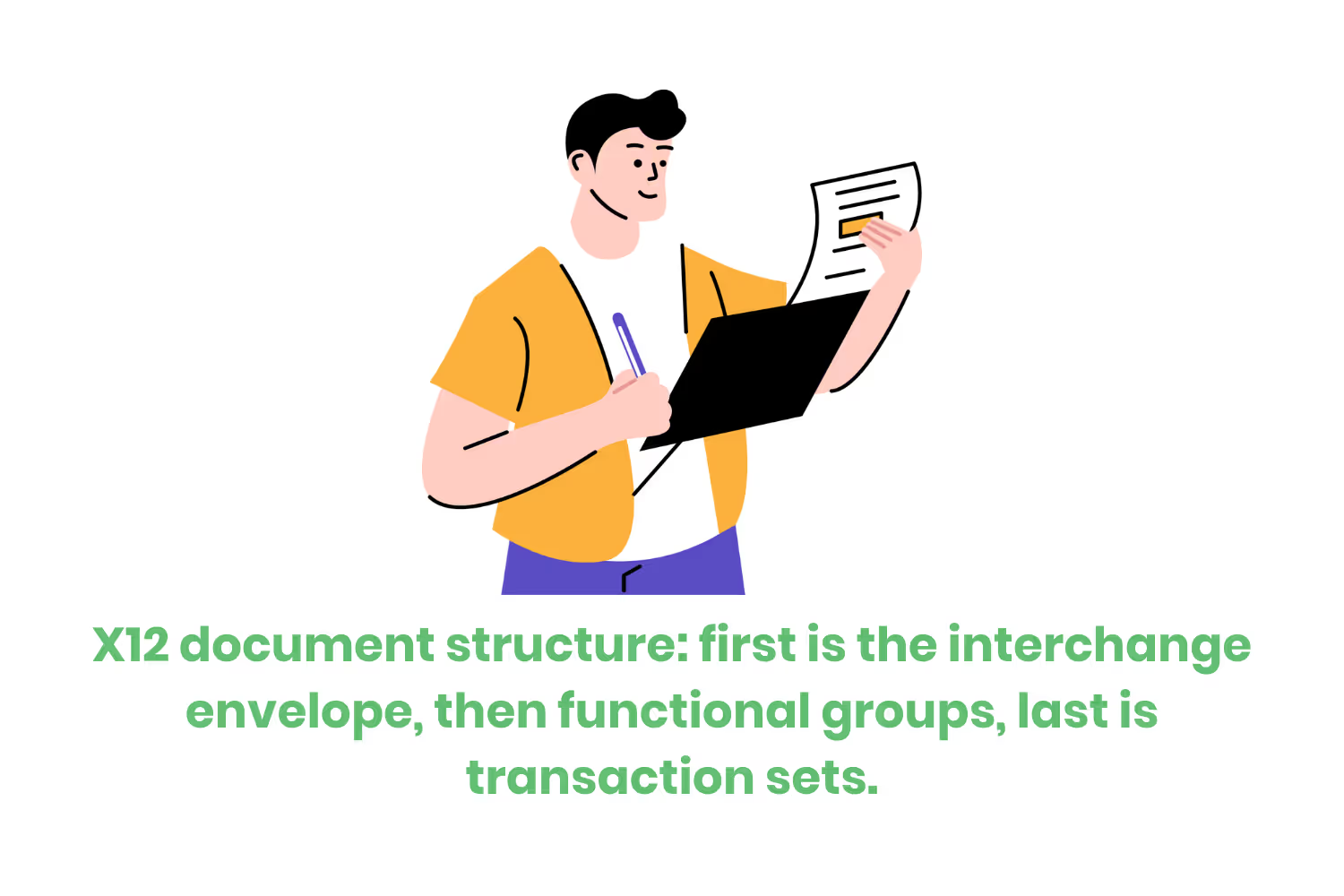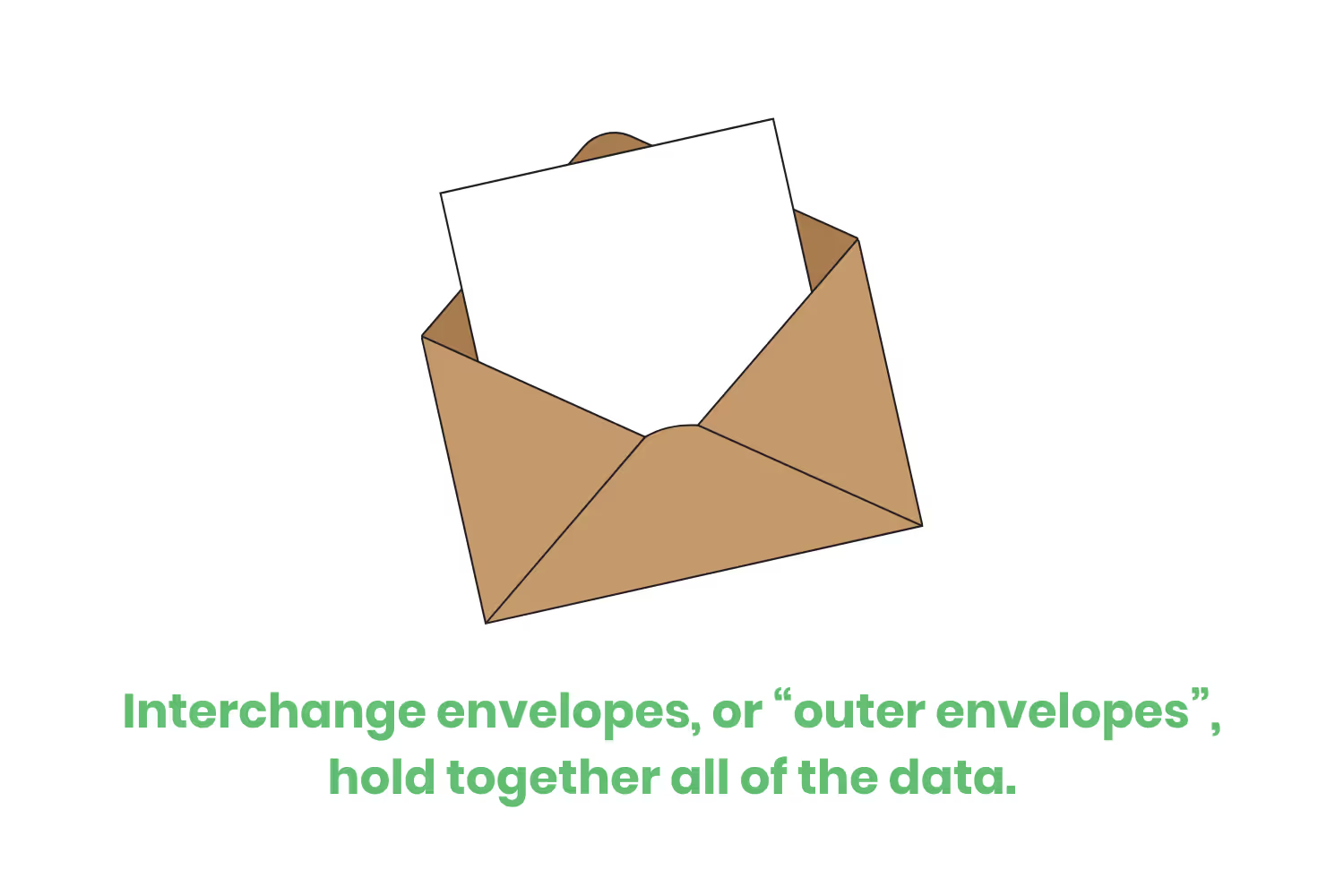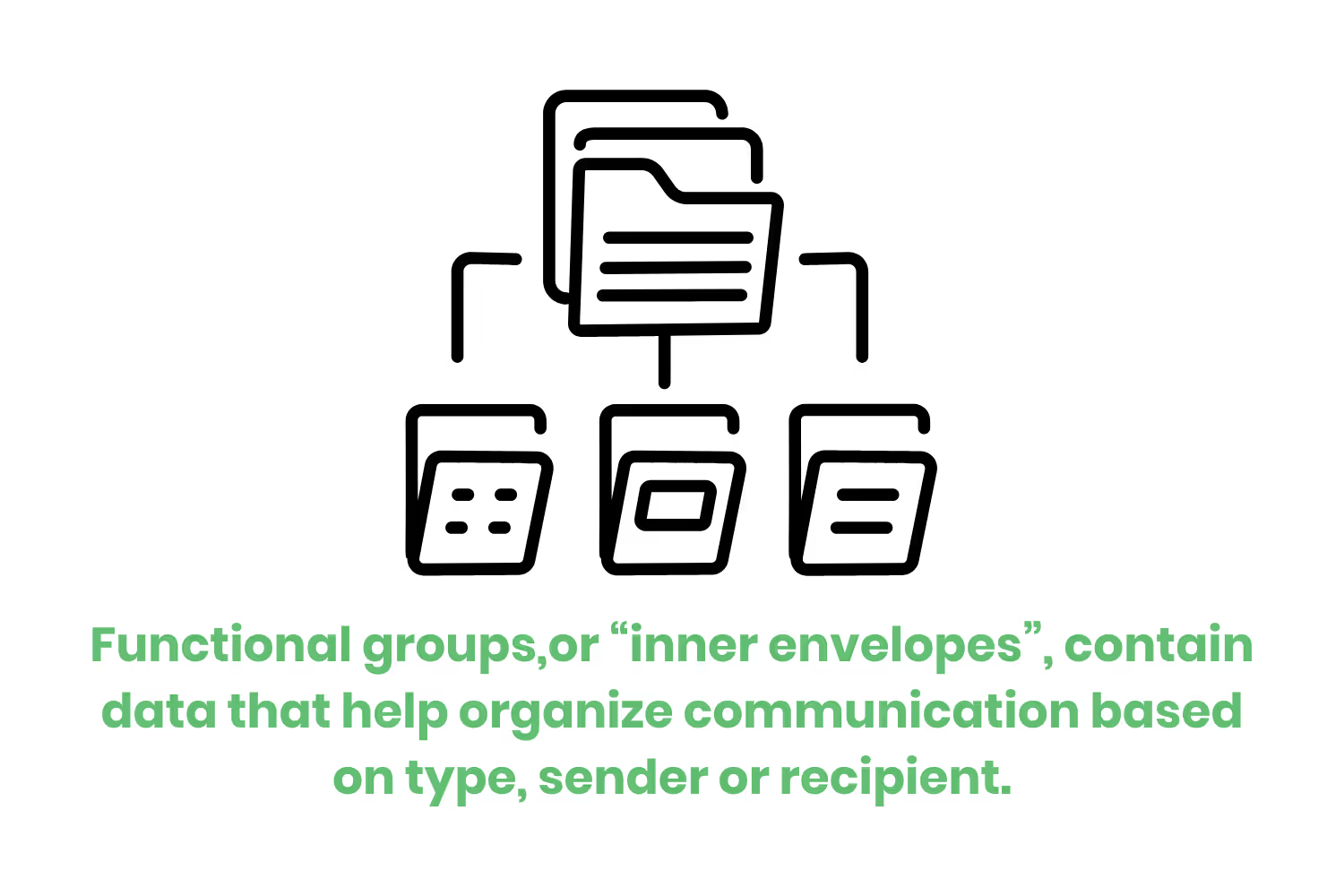EDI X12 Basics: ANSI ASC X12 and the X12 Standard
In this blog we look at the basics of EDI X12. We will touch on what EDI is in general and how X12 fits into the broader EDI landscape. As well as what constitutes a standard X12 message, what interchange envelopes do, and the importance of functional groups and transaction sets.

Research and Markets reports that in 2024 the global healthcare EDI (Electronic Data Interchange) market was approximately 4.47 billion USD. And it is currently set to grow to roughly 7.11 billion USD by 2029, with a CAGR of 9.7%. These are insane growth numbers driven by the digitization of healthcare and increased claims submissions. With these growing numbers, it’s no secret that other industries are sure to follow.
EDI now has standards associated with it so providers and payers can streamline operations. By doing so, this reduces administrative burdens that naturally come with running an organization’s revenue cycle management system. And this goes for any business, no matter the sector.

One of the most well-known standards in the United States is the X12 standard. The Accredited Standards Committee (ASC) develops and maintains the X12 EDI standard under the American National Standards Institute (ANSI).
When dealing with revenue cycle management in healthcare, proper education on common standards is essential. Today, we are going to look at the basics of EDI X12. We will touch on what EDI is in general and how X12 fits into the broader EDI landscape. As well as what constitutes a standard X12 message, what interchange envelopes do, and the importance of functional groups and transaction sets. Let’s get started!
What is EDI and How Does X12 Fit In?
EDI is the digital communication method used between two business entities to exchange information. This form of business-to-business communication enables structured data to transfer smoothly across different industries and platforms.
Established in 1979, X12 is an ANSI-accredited cross-industry standard for American business. Formally known as ASC X12 EDI, this format includes standards that help uphold our electronic information exchange.

The X12 standard outlines how to format and electronically transfer EDI transactions. And do so in a way all parties involved understand. The sender and receiver both receive data consistency through this format composed of these pieces that define business information:
- Elements - Individual items of information within a document such as company name, city, state, etc.
- Segments - A three-character code that organizes data into meaningful units. Logically groups elements together.
- Identifiers - Identify trading partners, transaction sets, and data elements.
What are the Different Types of X12 Documents?
There is a wide variety of EDI X12 document types. Each has its special use in business-to-business interactions. They also come with their own unique 3-digit number to represent its transaction type. Each of these numbers, or transaction sets, sees maintenance from their appropriate subcommittee operating under X12’s Accredited Standards Committee.
There are more than 300 different types of X12 EDI standard documents for industries including (but not limited to):
- Finance.
- Government.
- Healthcare.
- Insurance.
- Banking.
- Transportation.
Let’s check out some of the most common X12 EDI transactions.

Common ANSI X12 Document Types
Here are some of the most common business transaction sets and their meanings:
- EDI 810 - Invoice.
- EDI 835 - Remittance Advice
- EDI 837 - Healthcare Claim.
- EDI 846 - Inventory Inquiry/Advice.
- EDI 850 - Purchase order.
- EDI 855 - Purchase Order Acknowledgment.
- EDI 856 - Ship Notice/Manifest.
- EDI 997 - Functional Acknowledgement.
Understanding the X12 Document Structure
When looking at the X12 document structure, you’ll note the consistency it brings to every industry. It begins with an interchange envelope (ISA/IEA). This is usually followed by one or more functional groups (GS/GE). Then the transaction sets (ST/SE) come after that. These sets each include a transaction set header, data elements within the body, and finally a transaction set trailer. Let’s dissect each of these sections now.

What is the Importance of Interchange in EDI?
Interchange envelopes, or “outer envelopes”, hold together all of the data. This way businesses can send all information in a single transmission. It is the top-level envelope that identifies the:
- Sender.
- Receiver.
- Time of transmission.
The header and trailer define the interchange envelope. You can find the Interchange Control Header (designated ISA) at the beginning. While the Interchange Control Trailer (designated IEA) is at the end.
This outer envelope makes sure that the information within (functional groups and transaction sets) reaches its destination securely. ISA and IEA segments also include data element separators. As well as a data segment terminator. They house the identification of the sender and receiver, control information, and security information/authorization.
The sequence looks like the following:
- ISA.
- Optional interchange-related control segments.
- Message information (separated into functional groups).
- IEA.
So what is a functional group? Keep reading to find out!

The Role of Functional Groups in EDI
Functional groups, or the “inner envelopes”, contain data that help organize communication-based on type, sender, or recipient. More specifically, they contain one or more transaction sets. Note that these sets must all be of the same type, such as multiple invoices.
These functional groups are also defined by their headers and trailer segments. The functional group header (GS) appears at the beginning. While the functional group trailer (GE) comes in at the end. This assists in providing metadata about the contents and helps facilitate proper data routing.
Each transaction set within the functional group has a functional identifier code. This is the first data element in the header and is a two-letter code. The GS segment also contains:
- ID of sender and receiver.
- Control information.
- Time and Date.
Whereas the GE segment contains:
- Number of transaction sets involved.
- Group control number.
Next comes the EDI transaction sets. We sort of touched on this earlier in the blog, but let’s go over it again for good measure.
What Are Transaction Sets in EDI X12?
The layered structure of the X12 standard helps businesses better manage their EDI transactions. The final layer we will go over is the transaction set. It is a complete message representing a particular business transaction. These can be a claim, invoice, order, etc. Each transaction set contains:
- Transaction set header (designated ST).
- Transaction set trailer (designated SE).
- Single message, enveloped within the header and footer.
Transaction sets have a three-digit code, a text title, and a two-letter code. For example: 997, Functional Acknowledgment (FA). It places logically related data together into segments, such as address information. Within each segment is an element. Elements are single fields in a database table.

How to Implement X12 EDI Standards
Properly implementing X12 EDI means being able to understand EDI basics. Mapping transaction sets to internal data formats and performing system evaluation checks is important. This way you can ensure your EDI readiness.
Test your interchange flows and transaction sets with each business partner and monitor live exchanges. Doing these simple steps can help you smoothly implement your EDI system and manage errors efficiently and quickly. Some common issues with implementation are:
- Mapping errors.
- Integrating legacy systems.
- Managing incompatible software.
Remember that each functional group, header, and identifier must align properly. This way you can better avoid these errors and transmission failures.

The Benefits of Using EDI X12 Standard
Here are a few benefits that EDI X12 brings to the table. First, using this standard helps to eliminate the need for paper-based systems. As well as reducing manual data entry. Not only is this less time consuming, but it also improves the accuracy of data collection and storing. It also helps keep business transactions secure and reduces response times between organizations.
The X12 standard relies on structured formats, miscommunication is less of an issue. With fixed data elements, businesses can expect clean and accurate data coming from their respective partners.
With the reduction of administration work and mailing necessities, another benefit with the use of EDI is cost savings. There are many other benefits, but these are just some of the more obvious ones.
As the global EDI market continues to grow, understanding and implementing X12 standards is the answer to reducing your workload and administration costs.
Emphasize your product's unique features or benefits to differentiate it from competitors
In nec dictum adipiscing pharetra enim etiam scelerisque dolor purus ipsum egestas cursus vulputate arcu egestas ut eu sed mollis consectetur mattis pharetra curabitur et maecenas in mattis fames consectetur ipsum quis risus mauris aliquam ornare nisl purus at ipsum nulla accumsan consectetur vestibulum suspendisse aliquam condimentum scelerisque lacinia pellentesque vestibulum condimentum turpis ligula pharetra dictum sapien facilisis sapien at sagittis et cursus congue.
- Pharetra curabitur et maecenas in mattis fames consectetur ipsum quis risus.
- Justo urna nisi auctor consequat consectetur dolor lectus blandit.
- Eget egestas volutpat lacinia vestibulum vitae mattis hendrerit.
- Ornare elit odio tellus orci bibendum dictum id sem congue enim amet diam.
Incorporate statistics or specific numbers to highlight the effectiveness or popularity of your offering
Convallis pellentesque ullamcorper sapien sed tristique fermentum proin amet quam tincidunt feugiat vitae neque quisque odio ut pellentesque ac mauris eget lectus. Pretium arcu turpis lacus sapien sit at eu sapien duis magna nunc nibh nam non ut nibh ultrices ultrices elementum egestas enim nisl sed cursus pellentesque sit dignissim enim euismod sit et convallis sed pelis viverra quam at nisl sit pharetra enim nisl nec vestibulum posuere in volutpat sed blandit neque risus.

Use time-sensitive language to encourage immediate action, such as "Limited Time Offer
Feugiat vitae neque quisque odio ut pellentesque ac mauris eget lectus. Pretium arcu turpis lacus sapien sit at eu sapien duis magna nunc nibh nam non ut nibh ultrices ultrices elementum egestas enim nisl sed cursus pellentesque sit dignissim enim euismod sit et convallis sed pelis viverra quam at nisl sit pharetra enim nisl nec vestibulum posuere in volutpat sed blandit neque risus.
- Pharetra curabitur et maecenas in mattis fames consectetur ipsum quis risus.
- Justo urna nisi auctor consequat consectetur dolor lectus blandit.
- Eget egestas volutpat lacinia vestibulum vitae mattis hendrerit.
- Ornare elit odio tellus orci bibendum dictum id sem congue enim amet diam.
Address customer pain points directly by showing how your product solves their problems
Feugiat vitae neque quisque odio ut pellentesque ac mauris eget lectus. Pretium arcu turpis lacus sapien sit at eu sapien duis magna nunc nibh nam non ut nibh ultrices ultrices elementum egestas enim nisl sed cursus pellentesque sit dignissim enim euismod sit et convallis sed pelis viverra quam at nisl sit pharetra enim nisl nec vestibulum posuere in volutpat sed blandit neque risus.
Vel etiam vel amet aenean eget in habitasse nunc duis tellus sem turpis risus aliquam ac volutpat tellus eu faucibus ullamcorper.
Tailor titles to your ideal customer segment using phrases like "Designed for Busy Professionals
Sed pretium id nibh id sit felis vitae volutpat volutpat adipiscing at sodales neque lectus mi phasellus commodo at elit suspendisse ornare faucibus lectus purus viverra in nec aliquet commodo et sed sed nisi tempor mi pellentesque arcu viverra pretium duis enim vulputate dignissim etiam ultrices vitae neque urna proin nibh diam turpis augue lacus.



![[ANSWERED] What is a Long-Term Care (LTC) Pharmacy](https://cdn.prod.website-files.com/67e2b8210878abcba6f91ae6/68d687806a075a1cf64659b0_WhatisLongTermCarePharmacy_925.avif)
